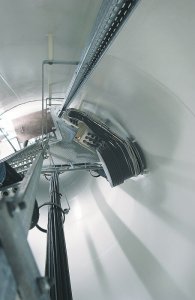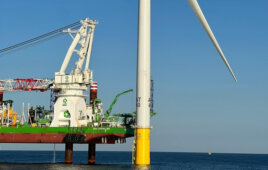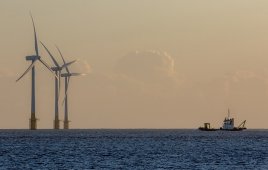This article is part of the 2017 Renewable Energy Handbook. A complete digital version of the Handbook is here: https://goo.gl/Sg4mHO
When selecting a replacement cable for a wind turbine, wind technicians should take several things into consideration. Uwe Schenk, Global Segment Manager at Helukabel, explained several things to look for during the wind turbine inspection process. Technicians should first inspect the dimension of the conductor to ensure that it is able to carry the rated current levels. Hardened conductor material is a sign that the current carrying capacity has overloaded the cable and a cable with a greater current rating should be used.
Cracks in the cable jacket are another issue. When cracks are found, it is crucial that the cable is replaced with one that has greater resistance properties. It is also important to locate the source of the damage so that steps can be taken to reduce its effects on the new cable. Common causes of damage include exposure to ozone, lubricants, electrical fields and mechanical stress.
It is also common to find damage to the outer jacket and torsion fatigue in cables that function in the turbine’s cable loop area. These problems should be dealt with immediately because abrasions wear away the jacket and insulation, exposing the conductors and resulting in potential electrical hazards.
“Technicians should replace the loop cables with those that have a strong resistance to both abrasion and torsion,” Schenk said. “This torsion resistance is critical because cables that are not suited for this type of application will either have their jacket, copper strands or both broken due to the strain of frequent twisting and untwisting.”
Recent cables are incorporating new technologies that increase the lifespans of cables by reducing the amount of damage they sustain. Insulation compounds are being developed for power cables to permit higher conductor temperatures and better abrasion characteristics, which improve the turbine’s overall efficiency. Also, additional conductor materials are being used in certain wind turbine applications. While copper was previously the only conductor engineers selected, aluminum is now considered a prime copper alternative for cables located in the tower and base areas. Aluminum cables are 60% lighter, have only slightly larger diameters and cost about half as much as copper cables while maintaining the same performance rating, Schenk said.
New technologies are also being developed for signal cables. These are now being constructed with a D-shield design to allow for better torsion performance. They are also seeing enhanced mechanical properties as a result of better insulation materials. Depending on the application within the wind turbine, copper signal cables are being replaced by other materials capable of transmitting data signals just as in power cables.
Engineers now have access to fiber-optic data cables in turbine applications such as the pitch control systems. This control turns the blades as the wind speed changes to keep the rotor speed within operating limits, and real-time data communications monitor wind turbine operations, Schenk said.
Filed Under: Cables & connectors





